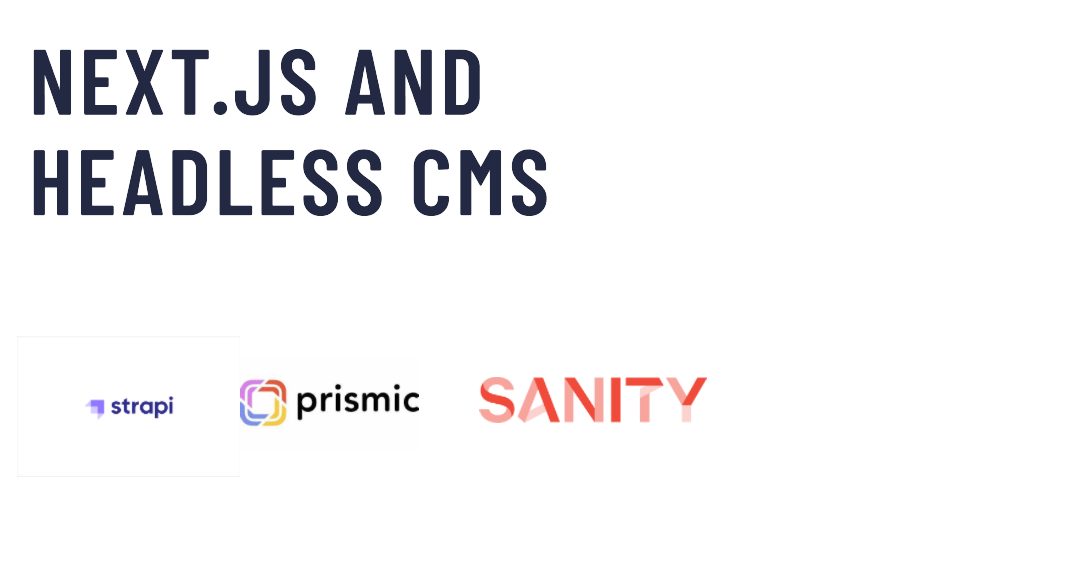Next.js and Headless CMS: A Guide to Building Dynamic Websites:
 Femi Wallace
Femi Wallace
In the ever-evolving landscape of web development, the demand for dynamic and engaging websites has never been greater. While traditional content management systems (CMS) have served us well, the limitations imposed by their tightly coupled architecture have become increasingly apparent. Enter the powerful duo of Next.js and Headless CMS, a revolutionary combination that promises to unlock the full potential of dynamic websites.
What is Headless CMS?
Headless CMS, unlike its traditional counterpart, separates the content management system from the front-end presentation layer. This allows content creators to manage and edit content through a user-friendly interface, while developers have complete control over the front-end experience using the technology of their choice. This decoupling offers numerous benefits:
Flexibility: Developers are no longer limited to the front-end frameworks supported by the CMS, allowing them to choose the most suitable technology for their project.
Scalability: Headless CMS can handle large amounts of content and traffic, making them ideal for growing websites and applications.
Security: By separating content management from presentation, headless CMS reduces the attack surface, making them more secure than traditional CMS.
Improved Performance: Headless CMS can leverage caching mechanisms and static site generation techniques to deliver faster loading times and a smoother user experience.
Why Choose Next.js for Your Headless CMS Project?
Next.js, a React framework specifically designed for server-side rendering, offers the perfect complement to Headless CMS. Some of the key reasons to choose Next.js include:
Server-Side Rendering: Next.js pre-renders pages on the server, resulting in faster initial load times and improved SEO. This is crucial for dynamic websites that require frequent content updates.
Static Site Generation: Next.js enables static site generation for content that doesn't change frequently, further enhancing performance and scalability. Data Fetching: Next.js offers built-in data fetching mechanisms that simplify the process of retrieving data from your Headless CMS.
Routing: Next.js provides a robust routing system that makes it easier to navigate your dynamic website.
Development Experience: Next.js boasts a developer-friendly environment with features like hot module replacement that make development faster and more efficient. Building Your Dynamic Website with Next.js and Headless CMS
Here's a step-by-step guide to building your dynamic website using Next.js and Headless CMS:
Choose your Headless CMS: Popular options include Contentful, Strapi, Prismic, and Sanity. Each CMS offers unique features and pricing structures, so research and choose the one that best fits your needs.
Set up your Headless CMS: Create an account and configure your content models and data structures.
Integrate your Headless CMS with Next.js: Most Headless CMS providers offer SDKs or plugins that facilitate integration with Next.js.
Implement data fetching: Use Next.js data fetching mechanisms like getStaticProps or getServerSideProps to retrieve content from your Headless CMS.
Build your front-end: Use React and Next.js components to build your website's user interface.
Deploy your website: Next.js offers various deployment options, including Vercel and AWS Amplify, allowing you to choose the best solution for your needs.
Benefits of Using Next.js and Headless CMS
Combining Next.js and Headless CMS opens a new world of possibilities for web development. Here are some of the key benefits you can expect:
Enhanced Performance: Faster loading times and improved responsiveness due to server-side rendering and static site generation.
Greater Flexibility: Freedom to choose the most suitable front-end technologies and customize the user experience.
Improved Scalability: Headless CMS can handle large amounts of data and traffic, making your website future-proof.
Content Agility: Content creators can easily update and manage content without impacting the front-end development.
Simplified Development: Next.js and Headless CMS offer various tools and features that streamline the development process.
Conclusion
Next.js and Headless CMS are a powerful combination that empowers developers to build dynamic websites with exceptional performance, flexibility, and scalability. By leveraging the strengths of both technologies, you can create engaging user experiences and ensure your website remains competitive in the ever-evolving digital landscape. So, unlock the full potential of your next project by embracing the power of Next.js and Headless CMS.
Subscribe to my newsletter
Read articles from Femi Wallace directly inside your inbox. Subscribe to the newsletter, and don't miss out.
Written by

Femi Wallace
Femi Wallace
I am a software Developer